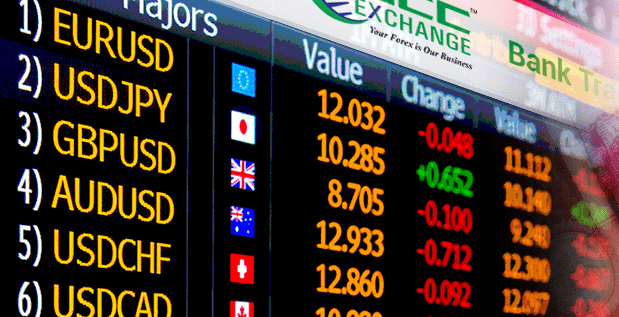
A copper future can give you great leverage and make it possible to trade large quantities of metal. Customers who are looking to lock down a price for a specific time can do so by purchasing a copper future. But copper is also a commodity, so it can fluctuate based on a variety of factors. The price of copper can fluctuate due to economic factors or geopolitical events. To make smart trading decisions, it's important that you keep an eye on copper prices over time.
In general, the Copper Futures market is open Sunday night through Friday night. You can trade during this time until 5 :15 p.m. and then trading stops. However, trading ceases at 12:30 p.m. on weekends or holidays. Copper futures prices can be accessed via streaming live from the Exchanges.
A copper futures charts is a graphic representation of the copper price over time. This chart is extremely useful for identifying patterns and determining support/resistance levels. Traders must also keep an eye on the copper price over time in order to determine if a trend is likely.

Copper futures prices vary by five cents a pound. The chart can be used by traders who hold a long position in futures to see if the price will rise or fall. If a trend does continue, they can buy a futures contract that gives them the right to sell copper at a specified price.
Copper is often used in integrated circuits, communications, and wiring. It plays an important role also in the development of renewable energy infrastructure. It is used in the manufacture of antimicrobial alloys which will help increase demand for germ-sensitive areas. Copper is used to make plumbing systems for new homes and other industrial applications. Copper futures contracts may be traded on several exchanges such as the Chicago Board of Trade or the Tokyo Commodities Exchange.
Copper futures' prices fluctuate depending on many factors. The factors include supply, demand, and geopolitical events. According to a new research note by Goldman Sachs, the copper price could rise as high as $5.21 by the middle of 2022. However, copper futures prices have not moved much in the last month. This is likely to be because of the trade war with China and the global economic slowdown.
The report estimates that global copper demand is expected to grow at 9.9 percent annually from now through 2020. Inflationary pressures will continue to have a lag effect in 2023. However, it is expected that ex-China demand will slow down before Chinese policy easing has a full impact.

Goldman Sachs projects a refined deficit of 200,000 tons in 2022, according to its forecast. The report also says that China's president has pledged to cut coal consumption in the country from 2026. This will only fuel copper demand, which will drive up its price.
Copper Exchange offers trading contracts for the current month and the next 60 months. Delivery is also possible in March, September, and December.
FAQ
What are the benefits to owning stocks
Stocks can be more volatile than bonds. The value of shares that are bankrupted will plummet dramatically.
If a company grows, the share price will go up.
For capital raising, companies will often issue new shares. Investors can then purchase more shares of the company.
To borrow money, companies can use debt finance. This gives them cheap credit and allows them grow faster.
A company that makes a good product is more likely to be bought by people. The stock's price will rise as more people demand it.
As long as the company continues producing products that people love, the stock price should not fall.
What is security on the stock market?
Security is an asset that generates income for its owner. Shares in companies is the most common form of security.
One company might issue different types, such as bonds, preferred shares, and common stocks.
The earnings per share (EPS), and the dividends paid by the company determine the value of a share.
If you purchase shares, you become a shareholder in the business. You also have a right to future profits. You receive money from the company if the dividend is paid.
You can sell your shares at any time.
Why are marketable Securities Important?
A company that invests in investments is primarily designed to make investors money. It does so by investing its assets across a variety of financial instruments including stocks, bonds, and securities. These securities have certain characteristics which make them attractive to investors. They are considered safe because they are backed 100% by the issuer's faith and credit, they pay dividends or interest, offer growth potential, or they have tax advantages.
It is important to know whether a security is "marketable". This is the ease at which the security can traded on the stock trade. If securities are not marketable, they cannot be purchased or sold without a broker.
Marketable securities include common stocks, preferred stocks, common stock, convertible debentures and unit trusts.
Investment companies invest in these securities because they believe they will generate higher profits than if they invested in more risky securities like equities (shares).
What is a Mutual Fund?
Mutual funds are pools of money invested in securities. They offer diversification by allowing all types and investments to be included in the pool. This helps to reduce risk.
Professional managers manage mutual funds and make investment decisions. Some funds permit investors to manage the portfolios they own.
Mutual funds are often preferred over individual stocks as they are easier to comprehend and less risky.
Are bonds tradeable
The answer is yes, they are! Bonds are traded on exchanges just as shares are. They have been for many years now.
They are different in that you can't buy bonds directly from the issuer. They must be purchased through a broker.
This makes buying bonds easier because there are fewer intermediaries involved. You will need to find someone to purchase your bond if you wish to sell it.
There are many kinds of bonds. There are many types of bonds. Some pay regular interest while others don't.
Some pay interest every quarter, while some pay it annually. These differences make it easy compare bonds.
Bonds are very useful when investing money. If you put PS10,000 into a savings account, you'd earn 0.75% per year. If you were to invest the same amount in a 10-year Government Bond, you would get 12.5% interest every year.
If you put all these investments into one portfolio, then your total return over ten-years would be higher using bond investment.
Statistics
- Even if you find talent for trading stocks, allocating more than 10% of your portfolio to an individual stock can expose your savings to too much volatility. (nerdwallet.com)
- The S&P 500 has grown about 10.5% per year since its establishment in the 1920s. (investopedia.com)
- For instance, an individual or entity that owns 100,000 shares of a company with one million outstanding shares would have a 10% ownership stake. (investopedia.com)
- Our focus on Main Street investors reflects the fact that American households own $38 trillion worth of equities, more than 59 percent of the U.S. equity market either directly or indirectly through mutual funds, retirement accounts, and other investments. (sec.gov)
External Links
How To
How to Invest in Stock Market Online
One way to make money is by investing in stocks. There are many ways you can invest in stock markets, including mutual funds and exchange-traded fonds (ETFs), as well as hedge funds. Your investment strategy will depend on your financial goals, risk tolerance, investment style, knowledge of the market, and overall market knowledge.
You must first understand the workings of the stock market to be successful. Understanding the market, its risks and potential rewards, is key. Once you have a clear understanding of what you want from your investment portfolio you can begin to look at the best type of investment for you.
There are three types of investments available: equity, fixed-income, and options. Equity is ownership shares in companies. Fixed income means debt instruments like bonds and treasury bills. Alternatives are commodities, real estate, private capital, and venture capital. Each category has its pros and disadvantages, so it is up to you which one is best for you.
There are two main strategies that you can use once you have decided what type of investment you want. One is called "buy and hold." You buy some amount of the security, and you don't sell any of it until you retire or die. The second strategy is called "diversification." Diversification involves buying several securities from different classes. You could diversify by buying 10% each of Apple and Microsoft or General Motors. Buying several different kinds of investments gives you greater exposure to multiple sectors of the economy. This helps you to avoid losses in one industry because you still have something in another.
Another important aspect of investing is risk management. Risk management allows you to control the level of volatility in your portfolio. A low-risk fund would be the best option for you if you only want to take on a 1 percent risk. If you are willing and able to accept a 5%-risk, you can choose a more risky fund.
Knowing how to manage your finances is the final step in becoming an investor. Planning for the future is key to managing your money. A plan should address your short-term and medium-term goals. It also needs to include retirement planning. Sticking to your plan is key! Don't get distracted by day-to-day fluctuations in the market. Keep to your plan and you will see your wealth grow.